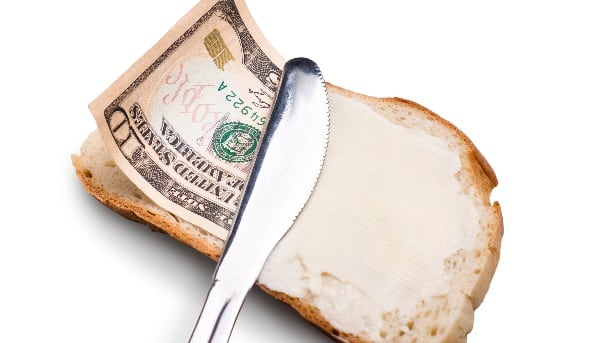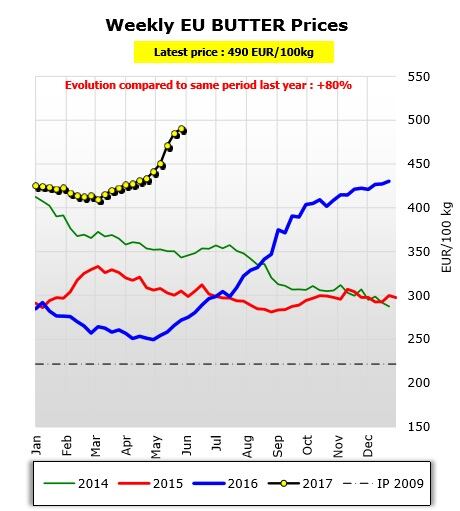The French Federation of bakery entrepreneurs has reported the price of butter has surpassed a massive 100% rise, stating the situation is no longer just a question of alarm, but “a major crisis amid risk shortage.”
This follows our report from May 23 noting the butter price had rocketed as much as 90% in the EUin the past year.

According to Matthieu Labbé, delegate general of the FEB, butter is now selling at €5.37 ($6.02) per kilo in France, which is an increase of 65 Euro cents in the past two weeks.
“Bakery, pastry and pastry makers, less than a year ago, bought butter [at] less than €3 ($3.36) per kilo,” he said.
Last week, the GDT’s butter price (GlobalDairyTrade) rose 3.3% to $5,631 per metric ton, the highest level since 2012.
Man cannot live on bread alone ...
The FEB is forecasting the crisis could cause a collapse of margins for the BVP (Boulangerie-Viennoisserie-Pâtisserie) sector, especially in light of the looming shortage of supply of raw materials.
“The shortage of butter is a real threat for the end of the year and [is causing] a panic in the market,” said Labbé.
In fact, Fabien Castanier, general secretary of Les Fabricants de Biscuits et Gâteaux de France (biscuit cake and manufacturers) said manufacturers are already facing problems with the availability of butter delaying deliveries or resulting in partial deliveries.
He said urgent action is needed to stop the “brutal consequences” the crisis is having on the French biscuit and cake manufacturing industry.
The butter price rise has cost its 60 plus members an estimated €68m ($76m) in the past year, he said, while the butter shortage is presenting risks of downtime of production lines.

But, what's the cause?
What has caused this situation is speculation rather than fact.
However, the US-based Milk Producers’ Council said European butter prices “are moving relentlessly upward” amid ideas that milk output in the EU has not seen as large a spring “flush” as had been expected.
The EU Milk Market Observatory also noted that, for Q1 2017 (January-March), EU milk deliveries were 2.3% lower than in the same period in 2016.
Pointedly, this coincided with the -4.0% decrease in butter production than in the same period in 2016.
As such, it said, European merchants are hesitant to offer much butter, preferring to keep stocks on hand for later this year.
Better butter up
To avoid the shutdown of production lines, the two French bakery associations are calling for the assistance of the retailing and foodservice industries to help manufacturers adjust their prices.
“Prices of croissants, pies, brioches… will have to increase significantly very quickly,” said Labbé.
He said that, in order for prices to return to coherent levels, the dairy industry needs to put more butter into production.
“This is not a negotiation, but rather [an] adaption in time of crisis. It’s about [the] survival of the sector,” he emphasized.
Butter is still better
Sergey Avramenko, head of Global Markets Research Team at IndexBox forecasts that consumers will not stop buying butter, despite the price rise.
“The increase in butter prices is resulting in the enhanced popularity of spreads and margarine, particularly in terms of people with low incomes. As people's prosperity increases, however, consumers are indicating a preference for butter,” he told BakeryandSnacks.
“Instead, consumers will start buying butter in smaller quantities, while opting for a high-quality product.”

